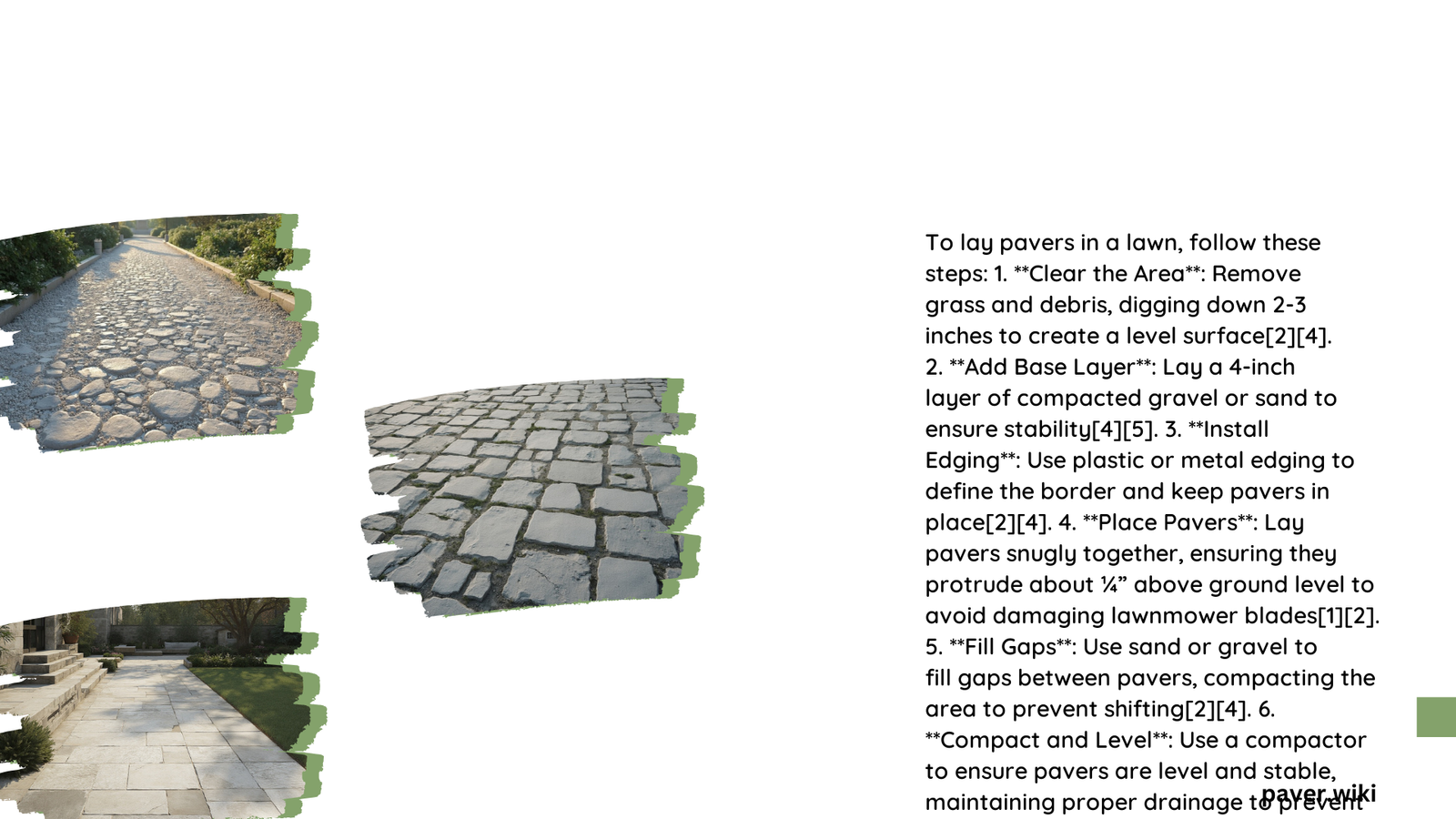Laying pavers in lawn is a popular landscaping technique that enhances outdoor spaces by creating durable, attractive pathways or patios. This process involves careful preparation, precise installation, and proper maintenance to ensure long-lasting results. From selecting the right materials to implementing effective drainage solutions, laying pavers in lawn requires attention to detail and proper techniques.
What are the Steps for Laying Pavers in Lawn?
- Prepare the Area
- Remove grass and debris
-
Level the ground
-
Create a Solid Base
- Excavate to required depth
- Install landscape fabric
-
Add and compact base material
-
Install Edging
- Set plastic or metal edging
-
Secure with spikes
-
Lay Pavers
- Place pavers in desired pattern
-
Ensure proper spacing
-
Fill Gaps and Compact
- Add sand between pavers
-
Compact with plate compactor
-
Final Touches
- Sweep excess sand
- Water to settle sand
How to Prepare the Lawn for Paver Installation?

Proper preparation is crucial for successful paver installation in your lawn. Follow these steps:
-
Mark the Area: Use stakes and string to outline the paver area.
-
Remove Grass:
- Option 1: Use a sod cutter to remove grass and roots.
-
Option 2: Apply herbicide and wait for grass to die before removal.
-
Excavate:
- Dig 6-8 inches deep for walkways
-
Dig 8-12 inches deep for driveways
-
Level the Ground: Use a rake and level to ensure a flat surface.
-
Compact the Soil: Use a plate compactor to create a firm base.
What Base Material is Best for Laying Pavers in Lawn?
The right base material is essential for a stable paver installation:
- Gravel or Crushed Stone
- Provides excellent drainage
- Compacts well for stability
-
Recommended depth: 4-6 inches
-
Sand
- Used as a thin layer over gravel
- Helps level pavers
-
Recommended depth: 1 inch
-
Paver Base Panels
- Alternative to traditional base materials
- Lightweight and easy to install
- Provides drainage and stability
| Base Material | Pros | Cons |
|---|---|---|
| Gravel | Excellent drainage, Stable | Heavy, Requires more excavation |
| Sand | Easy to level, Affordable | Can wash away, Less stable alone |
| Paver Base Panels | Quick installation, Lightweight | More expensive, Limited load capacity |
How to Ensure Proper Drainage When Laying Pavers in Lawn?
Proper drainage is crucial to prevent water pooling and damage to your paver installation:
-
Slope: Create a slight slope (1/4 inch per foot) away from structures.
-
Permeable Base: Use gravel or crushed stone for better water drainage.
-
Drainage Pipes: Install perforated pipes in areas prone to water accumulation.
-
Permeable Pavers: Consider using pavers designed to allow water penetration.
-
French Drains: Install alongside paver areas to redirect water.
What Paver Patterns Work Best for Lawn Installations?
Choosing the right pattern can enhance the visual appeal of your paver installation:
-
Running Bond: Simple and classic, ideal for pathways.
-
Herringbone: Adds visual interest, good for driveways due to interlocking strength.
-
Basketweave: Creates a textured look, suitable for patios.
-
Circular: Adds a focal point, great for garden features.
-
Random: Combines various paver sizes for a natural look.
| Pattern | Difficulty | Best Use |
|---|---|---|
| Running Bond | Easy | Walkways, Borders |
| Herringbone | Moderate | Driveways, Large Areas |
| Basketweave | Easy | Patios, Courtyards |
| Circular | Difficult | Focal Points, Garden Features |
| Random | Moderate | Natural-looking Areas |
How to Maintain Pavers Installed in Lawn?
Proper maintenance ensures the longevity and appearance of your paver installation:
- Regular Cleaning
- Sweep debris regularly
-
Pressure wash annually
-
Weed Control
- Remove weeds promptly
-
Apply polymeric sand to prevent weed growth
-
Sand Replenishment
- Add sand to joints as needed
-
Ensures pavers remain stable
-
Sealing
- Apply sealer every 3-5 years
-
Protects against stains and fading
-
Repairs
- Address any loose or sunken pavers promptly
- Replace damaged pavers as needed
By following these guidelines, you can successfully lay pavers in your lawn, creating beautiful and functional outdoor spaces that enhance your property’s value and appeal.
